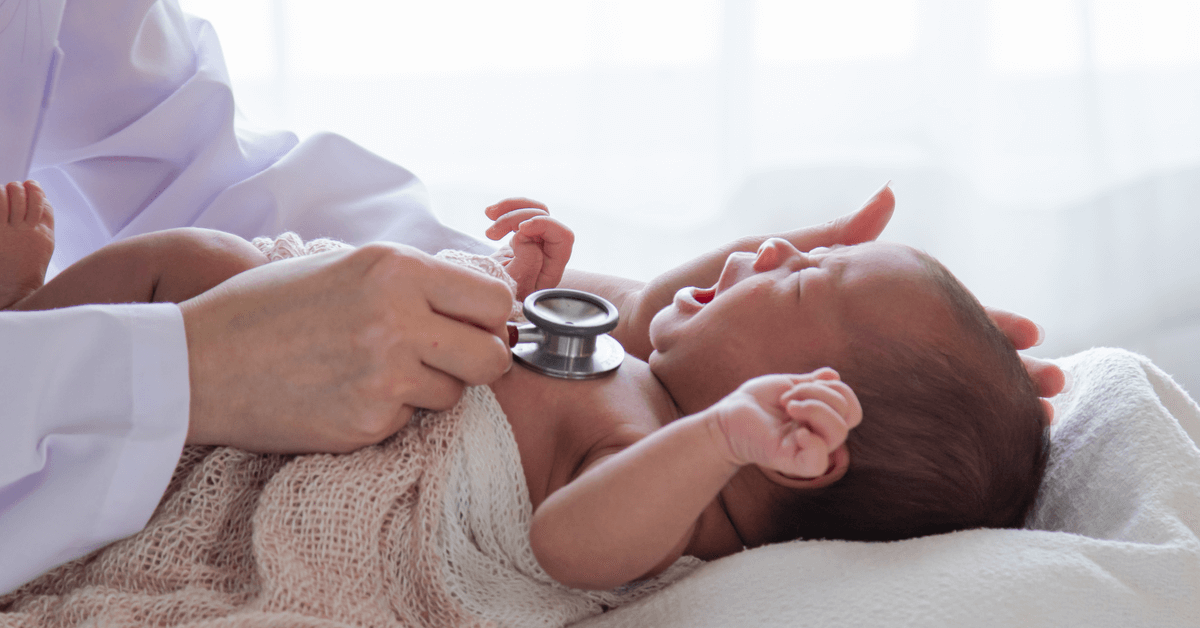When your baby first opens his eyes, he is still quite vulnerable, even though many systems in his body have completed their development.
The main reason behind this is that your little one does not yet have a robust enough defence system to deal with harmful microorganisms because babies’ immune system gets stronger over time.
However, infant diseases can occur with or after birth by taking advantage of these unprotected moments of the little ones.
So what are the diseases seen in newborns? Which symptom indicates which condition? What are the treatment methods?
What are Neonatal Diseases?
While you are thinking about taking care of your newborn, bacteria and infections can create some distressing situations for your little one. You can panic, confusing even non-dangerous symptoms with severe symptoms. For this reason, every parent should have information about the diseases in newborn babies.
The most common infant diseases and treatment methods in newborns are as follows:
Neonatal Jaundice
Neonatal jaundice, which everyone has heard at least once in their life, is a problem mostly seen in 2-3 day old babies, and it is considered the most common infant disease.
- Cause: As a result of the breakdown of haemoglobin, which takes on the task of carrying oxygen in the blood, a waste component called bilirubin is released. In adults, bilirubin is removed from the body system after undergoing some changes.
However, due to the immaturity of the digestive and excretory systems in babies, removing bilirubin is not easy, and there is a high amount of bilirubin accumulation in the blood.
With the rapid increase in this amount, bilirubin begins to give yellow colour to the body. This jaundice is also called physiological jaundice.
Jaundice also manifests itself as of late breast milk jaundice and early breast milk jaundice in infants. This condition develops entirely depending on the feeding of the baby with breast milk.
- Symptom: It manifests itself in the form of yellowing in the eyes and skin. The first yellowing starts inside the eyes and in the head area. Over time, it continues to spread to the chest area and from there to the arms and legs.
A constant state of sleep accompanies the colour change in the skin. Physiological jaundice may occur within 24 hours after birth and after the 2nd day, while jaundice of not being able to breastfeed may occur after the 3rd and 4th days.
- Treatment: Jaundice is often a self-limiting problem without treatment. But progressive jaundice can lead to other health problems in babies. Jaundice can be treated with phototherapy.
Newborn Diarrhea
As in all children, diarrhoea is one of the most common problems in newborns. Your baby is fed with mother’s milk during this period, so his poop is quite runny.
However, if other complaints accompany more frequent and more watery poop, your little one may have diarrhoea.
- Cause: Diarrhea occurs due to bacteria, viruses or parasites negatively affecting the digestive system. Since the immune system is much weaker than adults in newborns, babies are affected much faster by these microorganisms.
- Symptom: Liquid and smelly poops, such as water, evacuation of liquid from the body for a long time when liquid is consumed, vomiting and abdominal pain, fever, weight loss and loss of appetite are considered diarrhoea symptoms when they are seen together.
- Treatment: Diarrhea is a disease that should be considered. In case of intense diarrhoea, your baby’s body may be dehydrated, which can lead to shock. It would be best if you took a newborn whose diaper is soiled at intervals of 1-2 hours to the doctor.

Colic
The biggest fear of mothers is the colic baby. Colic, which can last from the birth of the little ones to the 6th month, is a situation where the baby cries for no reason, for hours, continuously and cannot be calmed down.
Most of the time, it cannot be called a disease as it does not indicate any health problems. However, colic can negatively affect your pup’s quality of life, cause feeding and sleep problems, and pave the way for long-term health problems.
- Cause: There is no definite cause for colic. But crying crises; may occur when one is disturbed by the effects of environmental stimuli when gas pains and reflux begins.
- Symptom: Minors with colic, which usually starts after the 2nd week after birth:
- Squeezes hands into fists,
- Stretches your back like a spring,
- Appears to be in pain,
- Inflate like gas pains,
- Gathers her legs or pulls them towards her stomach.
- Treatment: For colic, you can try tactics that will relieve your baby’s crying crises. It can help calm your baby, make him feel safe, and improve his quality of life. But if the crying problems do not go away, complaints such as vomiting and fever accompany the situation; if you sense anything out of the ordinary, you may need to consult your doctor.
Thrush
One of the diseases that can overwhelm your little angel is thrush. Thrush manifests itself in the first week after birth.
- Cause: The leading cause of thrush is the Candida fungus. Candida infection; causes white lesions on the inside of the mouth, inner cheek, tongue and tonsils.
This fungal infection gives the baby; it can be transmitted from the mother during standard delivery, from the mother’s nipple during sucking, or poorly cleaned nipples and feeding bottles.
- Symptom: A whitish appearance similar to thrush in the mouth area, especially on the inside of the mouth and on the tongue, and accompanying restlessness, irritability and refusal to suck are among the symptoms of thrush.
- Treatment: Because of the fungal infection, thrush treatment is usually done with the help of antibiotic drops. Cleaning the area with carbonated water also helps the treatment.
Parents should not manually clean the area where thrush has occurred and should not scrape the white image. This situation leads to the appearance of bloody skin from underneath.
In addition, breast milk is very effective in preventing thrush. Breastfed babies are much less likely to get thrush, and this condition can be used as a supportive treatment.
Graft Versus Host Disease
Another situation that is frequently encountered in newborn babies is the host. The host is also known medically as seborrheic dermatitis. It occurs in the form of crusting, scaly redness on the scalp and flaking of these rashes by taking the formation of crusts.
- Cause: The host has no bacterial cause. It occurs as a result of the unborn baby being exposed to the mother’s high hormone levels. The increased amount of hormones affects your pup, causing the sebaceous glands in his body to work too hard.
Mainly the scalp produces a large amount of sebum, and this sebum can dry out over time and cause crusts to form. The formation of the host has nothing to do with cleanliness and hygiene.
- Symptom: The host’s symptoms are the formation of scaly crusts on the scalp, the appearance of a red, thick and rigid layer. Especially the first month after birth is the most common period, and however, in some cases, this period can be extended up to 6 months.
- Treatment: There is no specific application in the host treatment. The crusts should not be removed and broken off. Massaging the baby’s scalp before bathing with various care oils or olive oil helps soften the crusts.
Then, parents should wash the area with warm water and baby shampoo with a suitable pH. After washing, parents should brush the shells with a soft toothed brush. In the case of the host, the most effective method is the cleaning of the area.
Conjunctivitis
Conjunctivitis is a disease that targets the eyes in toddlers. This problem, which can occur 2-3 days after birth, causes burrs and redness in the eyes.
- Cause: Conjunctivitis is also common in adults, and it can usually be of bacterial, viral or allergic origin. However, it is mostly of microbial origin in newborns. Bacteria that take advantage of the weakness of the defence system can cause some complaints by creating sensitivity in the eyes.
- Symptom: Conjunctivitis in your baby manifests itself as burrs in the eyes and sticking of eyelashes. First symptoms; itching in the eye, redness of the whites of the eyes, redness of the inside of the lower eyelid than usual, watering and tearing in the eyes. If you have noticed these symptoms, you may suspect conjunctivitis.
- Treatment: Treatment of conjunctivitis is eye care and sterilization. You need to clean your pup’s eyes frequently and keep them free of burrs and dirt. For this, sterile eye drops and eye pads can be preferred or washed with boiled and cooled warm water. In addition, your doctor can give an appropriate eye drop to eliminate the microbial condition.

Rash
The skin is the most sensitive organ of the body, and it can show some reactions by being affected by environmental factors very quickly. Newborns are also at risk for this reason. A rash may occur on the body of babies who are in a scorching and humid environment for a long time, mainly so that they do not feel cold.
- Cause: Rash is a rash that occurs in the form of red dots on the skin. It appears as a result of clogged sweat glands and not removing sweat from the body. Dressing in thick and layers, not keeping the skin clean, standing in a hot environment for a long time are the main reasons.
- Symptom: It appears as tiny red spots or intense red pimples on body folds, face, forehead and cheeks, arms and legs. Usually, your little one is not bothered by these rashes.
- Treatment: To prevent rash, you should not dress your baby too tightly and thickly, and you should not leave them sweaty, and you should change their diapers and sweaty clothes frequently. Especially in the hot summer months, it will be very beneficial not to prevent the skin from breathing by bathing the baby more often and avoiding products such as moisturizers.
Impetigo
Impetigo is a bacterial and viral infection with children under the age of 5 at risk. It is a skin inflammation consisting of small, crusty, yellow blisters and may threaten little ones with weak immunity.
- Cause: Impetigo is usually caused by some bacteria, and it develops much faster in babies with low immunity. It can be easily transmitted in humid and hot environments, crowded places, contact with the person carrying the disease.
- Symptom: It manifests as tiny, yellowish rashes on the corners of the mouth and lips, on the face and around the nose. When the infection spreads, thick crusts that look like wounds may form in the area, and itching may occur in the affected areas.
- Treatment: In treating impetigo, it is recommended to use antibiotic medication for viral infection and ointment for wounds. The medication given by the doctor should be continued until the wounds heal. During the recovery phase, the spread of inflammation can be prevented by putting gloves on the baby’s hands.
It should not be forgotten that the disease is contagious, and parents should adequately clean the inflamed areas. It usually goes away in 2-3 weeks.
Hernia
One of the problems encountered in newborn babies is a hernia. The parents can notice the hernia in the first days after birth.
- Cause: Hernias appearing in the navel or groin area are usually a congenital problem. Some intestinal issues may cause a hernia in the umbilicus, and a hernia in the groin may be caused by a health problem in the lower abdominal wall.
- Symptom: Neonatal hernias, which may be the size of a small hazelnut or walnut, swell slightly during crying and gain a more prominent appearance. It doesn’t hurt your little one, and it just appears as a slightly raised bump on their skin. Some hernias can grow in size with the baby.
- Treatment: Most hernias go away on their own by the time your baby is one year old. If your baby has a hernia due to a health problem, your doctor will apply the necessary treatment or surgically remove the hernia.
It is your most natural right as a parent to protect your baby from anything that may harm him. But babies’ first years can be spent battling infant diseases due to weak immune systems.
Every baby born into the world has at least 1-2 of these diseases. Almost all newborn babies’ diseases are problems that can be easily eliminated with proper treatment and regular care.
As a parent, you should take care of your baby more than ever and most importantly, you should not panic. When unusually developing intense complaints such as fever and vomiting occur, you should consult your doctor and take your baby to the nearest health unit if necessary.
Would you like to share your experiences and questions as a comment?
Have a nice and healthy day!







